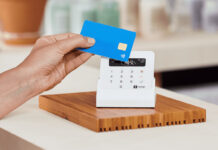Tableware can enhance consumer experience
ANYONE in the catering industry knows that while getting the food and drink offering just right is crucial, it’s not the whole story.
Ambience is a key component of any eatery, and choosing the right tableware plays an important role in establishing the look and feel of a venue. Cutlery, crockery, glassware and linen all have their parts to play in a customer’s enjoyment of their meal. But are operators paying attention?


Among the many factors operators should consider is the distance between the kitchen and tables.
John Artis, managing director of tableware supplier John Artis Ltd, said the economic climate has influenced operators’ buying decisions when it comes to glassware and crockery. “The impact of the recession has been that refurbishments have been delayed, resulting in operators prolonging the life cycle of tableware products,” he said.
Artis said although there is no set time frame for replacing tableware, operators should make sure they check regularly for signs of wear or damage. “Appearance of the product determines the replacement timing,” he added. “Nothing damages the perceived quality of a serving more than a tired and surface damaged plate.”
He also highlighted the importance of selecting tableware that’s well suited to an outlet’s food offer, like having appropriate cutlery for fish or steak, for example. It is also worth bearing in mind how the tableware is used by diners.
Francois Bonnefoy, area sales manager of tableware supplier WMF UK, said consumers have different needs from their tableware. Strange as it may seem, but not all tableware products work as well for left-handed people as they do for the right-handed majority. “Cups are a great example of how this can be a disaster,” said Bonnefoy, “especially these days where serving soups and desserts in cups has become fashionable.
“Many of our competitors will create beautifully designed pieces that are asymmetric or irregular and need to be presented to the diner in a certain way. Great, until you serve a left-handed guest.” Other hints and tips include thinking about the distance waiting staff travel between kitchen and table, as different plates and dishes have different weights.
Operators should also consider the shape and size of the tables in their venue, in order to buy crockery that fits them best. Cutlery is another key consideration, said Bonnefoy, as choosing between smooth and serrated knives will have implications on whether the cutlery will have to be sharpened or replaced in future.
Angie Buckroyd, national accounts manager at supplier Elia International, agreed that there are numerous factors operators should consider before choosing tableware. “In order to guarantee your tableware provision is the correct choice, it is invaluable to have samples presented and tested in your establishment and that you consult your chef,” she said. “Ensure longevity of supply, stock availability for top ups and request to have information on other users of the same product you can relate to and possibly gauge their opinion and feedback.”
And it’s not only plates and cutlery that have to be considered. Many premises have items such as menu holders, service trays and displays.
Rebecca Hunt, marketing co-ordinator of specialist display provider Dalebrook, said durability will be a major factor for operators who do not wish to replace their tableware often. “Look for items that are durable and resistant to chipping and staining so that they will not have to be replaced as often,” she said.
























